#Baobab farming
Explore tagged Tumblr posts
Text
Baobab Farming in Kenya: How Kenyan Originals Supports Kilifi Baobab Farmers - Farmers Trend


0 notes
Text
Baobab Farming in Kenya: How Kenyan Originals Supports Kilifi Baobab Farmers
Nestled in the coastal town of Kilifi, Kago John, a 33-year-old research microbiologist, has found a unique niche in baobab farming. His 5-hectare plantation on the Mnarani Mombasa-Malindi Road supplies Kenyan Originals (KO) with high-quality baobab powder, a crucial ingredient for their Gin. This partnership not only showcases the potential of baobab but also highlights KO’s significant support…
#Adansonia digitata#agroforestry#Baobab benefits#Baobab conservation.#Baobab cultivation#Baobab export#Baobab farming#Baobab fruit#Baobab growth#Baobab leaves#Baobab market#Baobab nutrition#Baobab oil#Baobab powder#Baobab products#Baobab seeds#Baobab trees#Baobab value chain#Drought-resistant crops#sustainable farming
1 note
·
View note
Text
[MINECRAFT AU]
ISLANDERS : THE SEVEN RULING VILLAGER CLANS
—————————————
CLAN #01 : PLAINS
The common folk of the Grassland Plains Biome. They're a simple people, probably the most common and well-known villagers you'll encounter while exploring Caeloria. They have harvest festivals, public gatherings in central markets, and tell stories around the campfire. Their economy is made up of skilled farmers, traders, and builders. They produce and export grains, livestock, and crafted goods which vary on the profession. They rely on Iron Titans and rudimentary fortifications but distrust weapons (although some villagers like blacksmiths do create weapons for trading with people more open to violence.) Their villages are made up of homes with the timber-framed architecture style, wooden roofs, and are usually surrounded by small farms.
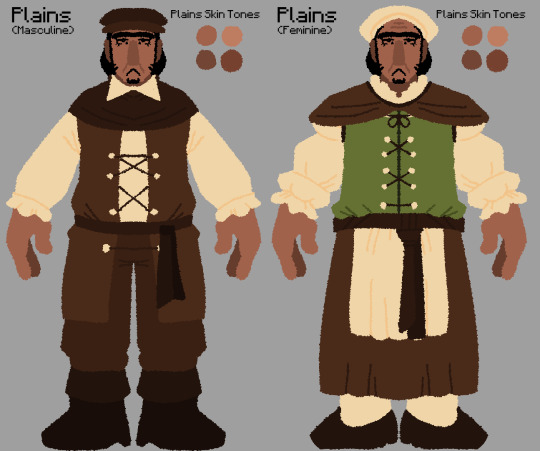
CLAN #02 : DESERT
The inhabitants of the Desert Biomes. They are not as simple as the Plainsmen, and their culture is more focused on keeping a holy life, alongside securing a safe trip into the Afterlife. They do daily prayers to honor the sun, moon, and the passage of time itself, alongside intricate funeral ceremonies and rituals to ensure safe passage into the Afterlife. Their economy is famous for their trade caravans, glasswork, pottery, and exotic spices. While they also have Iron Titans, they use dynamite traps to protect their sacred temples and religious sanctuaries. The villages are made up of Sandstone, with domed roofs to regulate temperature, often built around oases and river beds.
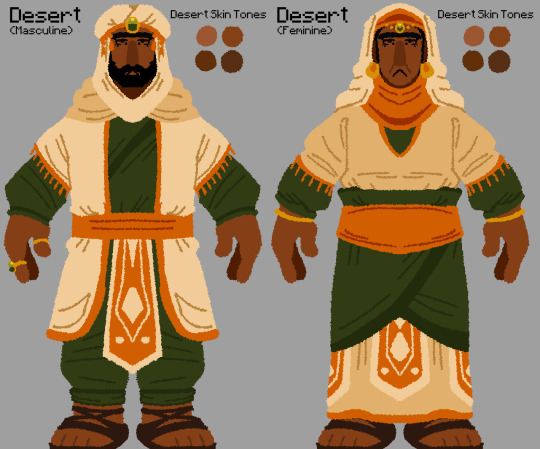
CLAN #03 : JUNGLE
The hunters that reside within jungle biomes. Unlike most villager clans, they're a militaristic civilization, focused mainly on hunting. They have daily ritual dances at sunrise and sunset, large hunting trips usually consisting of "packs", and a variety of face paint representing their roles in society, or, for a hunter; their achievements and rank in hunting. They're a people skilled in herbal medicine, dye-making, and the creation of weapons. Instead of living on the ground like most villagers, these hunters live in wooden treehouses interconnected by bridges to maintain high ground advantage during hunting. They use the vines of the trees to climb up and down. While they have their own variant of the Iron Titans, they also rely on boobie traps and ambushes from multiple packs as defense mechanisms.

CLAN #04 : SAVANNA
Savanna Villagers are the second most welcoming villagers of Caeloria, and similar to the Plains Villagers, they rely on community, tradition, and peace. The main thing that separates them from the Plainsmen is their belief in astrology. They believe that the stars guide their fate, and a lot of their traditions revolve around astrology. Stargazing ceremonies, seasonal festivals aligned with celestial events (basically just.. holidays) and storytelling under the stars. Their economy is constructed of skilled weavers and artisans, known for intricate carving, cloth-dyeing, and crafting of jewelry, usually having a celestial theme. Unfortunately, I couldn't capture that as much as I could with the designs, as the concept came after they were already done. They're also expert animal handlers, known for domesticating and breeding fast horses for both companionship and a good defense mechanism, aside from the Iron Titans, ofcourse. Their villages are usually made up of terracotta or mud blocks, shaped in the style of mud-and-tatch huts. I also like to think that in-game there would be a massive baobab tree in the center of the village, which would lead in an Iron Titan attack if it were destroyed by a player.
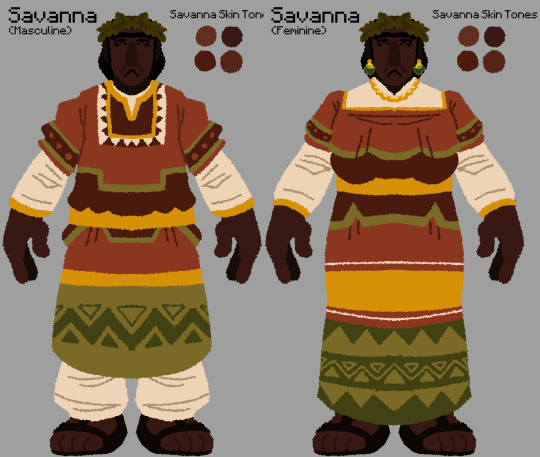
CLAN #05 : SWAMP
These guys are the black sheep of Villager society, even if per say the Jungle Clan's hunting traditions are questioned by the rest of village society, at least they keep their hunting trips tame! These guys are a full-on cult, the most controversial of the clans. Their traditions are rather questionable; they make blood sacrifices to some kind of "Spirit of The Swamp" some mystical natural energy they seem to try and appease. New members of the cult must craft their own ceremonial mask from the remains of a hunted beast, believed to bind them spiritually to the creature and grant them its strength. This is basically my in-universe reason for why certain things like skeleton heads, creeper heads, dragon heads, etc. can be collected. Maybe if this were a mod of some sorts you'd need some kind of mob skull to not get attacked while exploring the swamp? Idk. Every twenty years or so, a great hunt is held for a "cursed beast," often the last of a dying species, as they believe such creatures hold the most potent spiritual energy. We know the Sniffers are nearly extinct, maybe these villagers are related to that in some way. Hell, when we play the game, the Sniffer could be the beast they are out to hunt. Their economy is built on potion-making, fungus cultivation, and fishing. They lack Iron Titans for defense, instead relying on hunting and camouflage techniques, their houses themselves are designed to camouflage with the bog's trees. They're also oomfies with the Witches. With all this world-building done you'd be surprised to find out that these are actually my least favorite of the seven villager variants in-game.

CLAN #06 : TAIGA
Considering the last two yap-fests, I have a lot less to say about the Taiga Villagers. They're a people who value trust, loyalty, strategy, and honor. They live in communal spruce wood long houses, typically working inside. They tend to train inside, meditating and having communal prayers inside of huts, circling around the campfire. Some also go out and meditate in the cold to test their endurance during full moons, which doubles as an opportunity to hunt for resources. Their economy is built on their massive supply of wood, meat, natural herbal remedies, and leather skins. They have Iron Titans that protect them from wild animals and Pillagers. They're strong allies with the Plainsmen, alongside the Desert and Savanna Tribes. Their strongest ally, however...

CLAN #07 : TUNDRA
A group of small tribes that are master survivalists. They believe in community, honor, and strategy. They're the strongest ally to the Taiga Clan, and vice versa. They also don't mind trading with the Desert Clan. These cold and reserved people live within reinforced wooden cabins, often remaining inside at all times unless it is necessary to go out hunting. They trade seafood, wool, and rarer gems such as emeralds, gold, and even diamonds. They also trade large supplies of wood. That's all I really have to say about them!

And that's all seven Villager clans redesigned and expanded upon!! I hope they came out looking decent lmfao
#minecraft#minecraft au#the islanders au#minecraft art#mineblr#mineblogging#minecraft villager#minecraft fanart#minecraft related#fantasy#kinda??#dark fantasy Minecraft#world building
13 notes
·
View notes
Text
Ada, staring at a bonsai tree: Lucifer, what the fuck is THAT?
Lucifer: Huh? Oh. That's a bonsai. You knew what a bonsai is, right?
Ada, shaking her head: First time seeing them. They didn't have these on Earth at the Beginning of Humanity. And I sure didn't farm them in my gardens.
Ada, poking the tree: It's so...so tiny.
Lucifer: They can be pretty big, too, Ada. Like...tall as me, or even tall as you.
Ada, freezing, excited: Seriously? These little fuckers can get BIG? *getting more excited* Like the gargantuan baobabs and the adansonias?
Lucifer: Uh...not as big as those. It's used more in decoration, I think. It's supposed to be an art form in some mortal culture on Earth? That's really all I know about it. I'm surprised you didn't hear about in Heaven.
Ada, sighing: It's possible I heard it, but just didn't pay it any attention. I kinda went from being Michael's pageboy and soldier, pushing papers and shoving in spears, right to leading the Exorcists. And I was too busy fucking and fighting and drowning in denial at that point...
Lucifer, noticing Ada's frown: We could get a bonsai for the house, if you want? I'm sure Oz would like it. We could even get one for Charlie, too. Maybe her residents will like it.
Ada, grinning: Can we get four? One for us, one for Charlie, and two for our garden!
Lucifer, already pulling out his wallet and talking to the stunned shop-keeper: See that smile on her face? I want it BIGGER. I'll take ten of these fuckers.
Shop-Keeper: ...Fifteen would probably make your broad more than ecstatic.
Lucifer: Make it twenty.
14 notes
·
View notes
Text
A writer’s guide to forests: from the poles to the tropics, part 7
Is it no.7 already? Wow. A big shout out to everyone who has had the patients to stick with this. Now onto this week’s forest…
Dry forest
Water is life. That’s a fact. And especially where it doesn’t rain for more than half the year.
Location: Dry forests are scattered throughout the Yucatán peninsula ,South America, various Pacific islands,Australia, Madagascar, and India. Areas have been cleared by human activity, and the SA dry forests are classified as the most threatened tropical forests.
Climate: Temperate to tropical, with just enough rain to sustain trees. Many are monsoonal, with rain coming in one or two brief periods separated by a long dry season.
Plant life- Hardy trees, such as Baobab and Eucalyptus are able to last with little rain by tapping into groundwater with extensive root systems. Many trees are evergreen, but in India, many species are deciduous. Trees are often more spaced out, and shrubs and grasses grow extensively. Cacti are common plants in the Americas, with some growing tall enough to be considered trees. In order to survive the heat and lack of water, many small plants are annuals, or store water in tubers. Palms can make up a large percentage of the trees, as was the case in the now vanished forests of Easter Island.
Animal life- As they can come and go when they please, birds are common species. Larger animals are active year round, with smaller species of mammals, amphibians, and certain insects only coming out during the rainy season. Isolation means that islands become home to many endemic species; think about Madagascar and the lemurs, or Darwin’s finches, iguanas, and tortoises in the Galapagos. Isolation has also led to the marsupials of Australia developing to fill the niches that would normally be occupied by placental mammals .The introduction of invasive species has brought about the extinction of island fauna.
How the forest affects the story- Water, or the lack of will be the biggest challenge your characters will face. Rivers and lakes may be seasonal, so other sources will have to be utilized. Drinkable fluids can be obtained from various plants and animals, or maybe the bedrock is porous and water accumulates in cenotes. Your characters could come from a culture that builds artificial reservoirs to collect the rain and store it for the dry season. With careful water management, cities can thrive in dry areas. But your characters will have to be careful. Prolonged drought will see societies go the way of the Maya. Deforestation leaves the topsoil vulnerable to the wind, and forests, farms, and grassland will inevitably turn to desert. Whether nomadic or sedentary, your characters and their society will have to find a way to interact with the forest without destroying it or themselves. Can they do it? Can a damaged biosphere be restored before it’s too late? The success or failure of your characters and/or their predecessors can be a driving focus of the plot. Of course ,when the rains do come, it could be in the form of a cyclone. Dry ground does not readily absorb water, and flash floods are a danger. Water can grant life, but it can take it as well.
#writing#creative writing#writing guide#writing inspiration#writing prompts#writer#writers#writing community#writer on tumblr#writeblr
48 notes
·
View notes
Text
more 악어 day 3 vod thoughts!
춘식 continues to be the only saving grace of this house, so now we have windows!
while placing the windows, 악어, for the first time, realizes that the middle of this house, the original part, is not symmetrical
he fixes this? he does not fix this. he add an oak half-slab in the ceiling of baobab.
악어 keeps saying "we don't need to dump all of our time at home" "집에서 모든 시간을 쏟을 필요가 없어" is this. is this perhaps a result of you not spending time on the architecture of your home
"깨뜨려" (kkae-ttul-rwuh) does a lot of heavy lifting for game specific jargon - it literally means to break something (like a glass, think something that breaks sharply) but in qsmp you can read it as "fulfill" in a lot of cases - 악어 uses it to indicate finishing quests or completing a dungeon
"i feel like a horse would be significantly faster - 춘식 do you have a horse" 춘식 does not have a horse 춘식 only has ostrich
"ok i'm gonna kill some horses before we go" -> "i'm going to go get some gas" the translator actually saw the motorboat and was trying to help
"we can't go to hell" -> not the nether portal dumping them back at spawn
"개꿀" (geh-kkul) "꿀" is honey but it just means very good (in korean slang) -- 악어 used it quite a lot this stream so i thought i might mention
cookie economics
"when 중력 (jungryeok) comes in on friday, i'll slip in and give it to you then" more cookie economics
raiding a wheat farm for the seed quest (is the farm foolish's?) "no one will know"
ALL DONE 악어 said in the stream that he's pretty busy with games and such this (last?) week so i'm assuming that aside from him coming in for 중력 (jungryeok)'s introduction that he hasn't been on qsmp since!
21 notes
·
View notes
Text

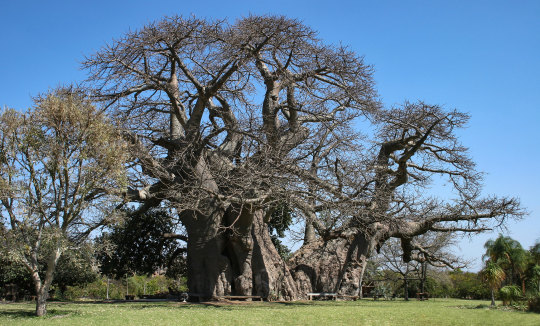
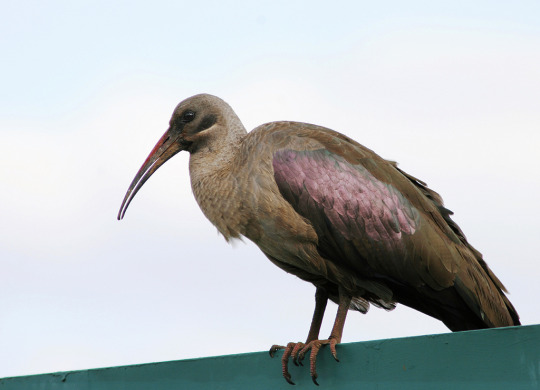
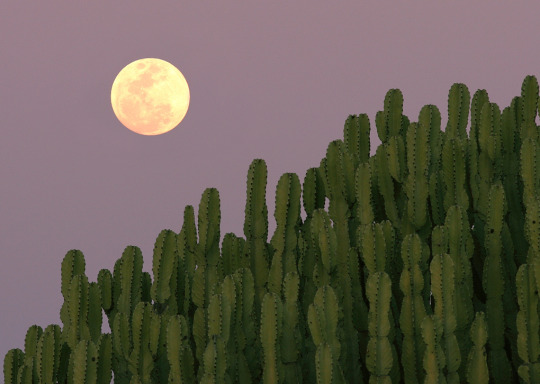

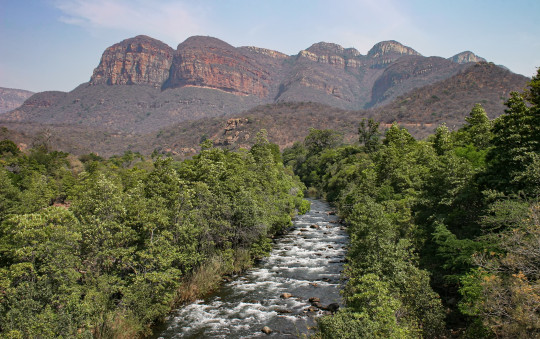
South Afrika 2005 (2) (3) (4) (5) (6) by Achim
Via Flickr:
(2) A Sunland Baobab tree on Sunland Farm (Platland Farm), near Modjadjiskloof (previously known as Duiwelskloof), Limpopo Province. In one study the tree was carbon-dated and found to be an estimated 1,060 years old, plus or minus 75 years. Results of other studies have however suggested much higher ages (up to 6,000 years). The tree blooms profusely in spring and provides a refuge to two pairs of owls, and other bird species. One third of the Boabab tree collapsed in August 2016. (3) Hadada Ibis, Dullstrom. (4) Moonrise in Klein Bolayi near Messina. (5) Amethyst Sunbird in Warmbath. (6) Blyde River and the Drakensberg / Drakensberge, Limpopo Province.
#african wild dogs#complicated tree#birds#ibis#moon#evening sky#cacti#amethyst sunbird#rivers#mountains#south africa#limpopo
9 notes
·
View notes
Text
Find the perfect Tanzania Zanzibar adventure with Zanzibar Bookings!
Are you searching for the ultimate active adventure in Zanzibar? Are you a thrill seeker, beach lover, or culture enthusiast looking to participate in multi-day adventure activities in Zanzibar? Take the help of Zanzibar Bookings – a leading travel agent based in Zanzibar. They can organize numerous day trips & adventure tours covering all alternatives Zanzibar has to offer. They bring endless opportunities for you to explore while in Zanzibar! You’re sure to find the perfect Tanzania Zanzibar adventure with Zanzibar Bookings!

Zanzibar offers a lot of excitement for those who love adventure. Along with many other activities in Zanzibar, there are thrilling activities that will challenge you. Choose to show off your daring side by opting for the best of adventures in Zanzibar. The adventure tours in Zanzibar from Zanzibar Bookings will leave you with a memorable experience! From adrenaline-fuelled experiences to water sports, there are numerous tailor-made adventures to choose from. Some of them are:
Catamaran Trip Tour organisers have a wide range of trips onboard catamarans to cater to the preferences of individual customers. A customised live aboard 50ft (16.5m) catamaran specialising in diving is based in Zanzibar, available for day sailing or longer trips. Guests can choose where they want to go and what they want to do.
Quad biking Driving a quad bike to enjoy a rich off-road itinerary into the wild landscape through local farms, sugar cane plantations, quarries, spice trees and secular baobabs. The quad bikes are very easy and safe to drive as they are fully automatic.
Fly Board
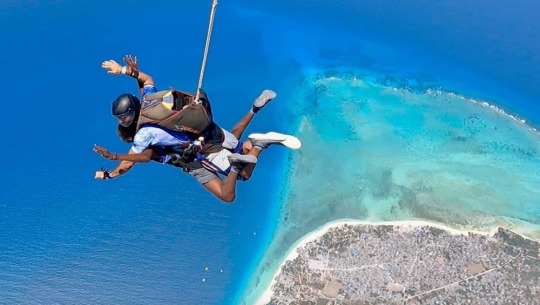
Parasailing Parasailing is a safe, easy and exciting activity. It's an adventure anyone can enjoy because there is no running or jumping, and no experience is necessary. Your captain will provide safety and flying instructions to ensure you have a wonderful time in the safest way possible. When it is your turn to parasail, you will be secured in a safety harness. You are safely and securely attached to the rope allowing you to soar in the air and enjoy the thrill of flying and the amazing panoramic views of the island.
Deep Sea Fishing Fishing in Zanzibar is a pleasure, with the turquoise and deep blue of the ocean contrasting against perfect powder blue skies. Zanzibar is famous worldwide for its exciting fishing opportunities. The water at Zanzibar is perfect for big game fishing. Whatever time of year you visit, fishing here ensures to have a great day out. Striped, black and blue marlin, elusive spearfish, Dorado, yellowfin tuna, wahoo, barracuda, and kingfish all provide endless hours of action-packed game fishing out on the ocean.
Jetski Tours The jetski tours will take you to admire its perfectly pristine setting. It will let you swim and get a chance to cruise along the coastline. If you are visiting Zanzibar and like to have some adventure, you should try this activity!
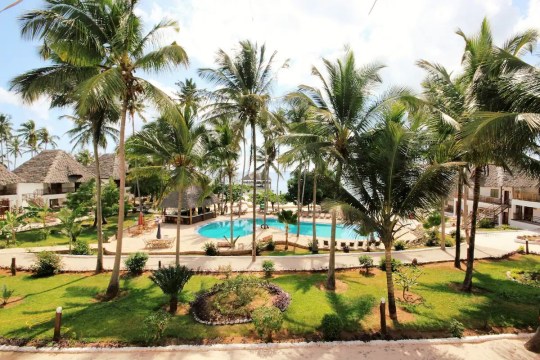
Stand Up Paddling Looking for a fun activity during your stay in Zanzibar? Joining Surf for a trip will be something you will enjoy. Whether you are a kite surfer waiting for wind or just a visitor, this is the thing for you! Stand-up Paddling is a very relaxing and fun way to enjoy the water.
Diving And Snorkelling In Zanzibar Zanzibar Island is surrounded by the warm waters of the equator. The coral reefs are home to amazing marine life and offer thrilling scuba diving and snorkelling opportunities within a short boat ride from most beaches. The safe calm waters of Zanzibar are perfect for scuba beginners!
3 notes
·
View notes
Text
Ghana-Blog#0
Hallo ihr alle :)
Nun bin ich schon seit drei Wochen in Ghana und finde, dass es deshalb langsam an der Zeit ist, sich mal in Form eines kleinen Eintrags zu melden, um einige meiner bisherigen Erfahrungen zu teilen und euch so auf dem Laufenden zu halten.
Was schreibt man also in seinen ersten Blogeintrag?
Zu Beginn möchte ich eine grobe Zusammenfassung der letzten drei Wochen geben und dann ein Bisschen meine Gedanken dazu teilen. Zum Schluss möchte ich noch einen kurzen Ausblick auf die kommende Zeit geben, in dem ich auf meine Hoffnungen und Erwartungen eingehe.
Für alle, die noch Fragen zum Projekt, in dem ich arbeite, haben, habe ich einen separaten Artikel verfasst:
Viel Spaß beim Lesen!
Am Montag den 14. August sind Louisa und ich in Accra - die Hauptstadt Ghanas - gelandet.

Wir haben dort eine der Freiwilligen des letzten Jahres getroffen, die uns geholfen hat, in den ersten Tagen alle relevanten Dokumente und eine SIM-Karte zu organisieren. In unserem Hostel haben wir ein paar nette Bekanntschaften gemacht, mit denen ich dann auch den Stadtteil Jamestown etwas erkundet habe.

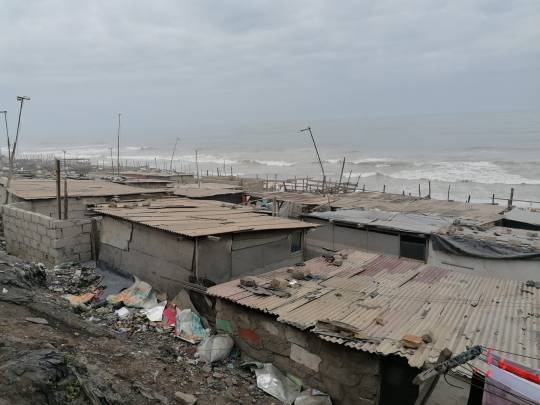
Am Donnerstag fuhren wir dann Richtung Westen über Cape Coast nach Kissi ins Baobab-Center. Hier angekommen haben wir uns erstmal einige Tage akklimatisiert und ganz viele Schüler und Lehrer kennengelernt.


Diese Zeit habe ich als relativ mühsam empfunden, da das Klima und das Essen uns sehr zu schaffen gemacht haben. Ich habe teilweise über 12 h geschlafen. Da noch Ferien waren(noch bis zum 11. September), gab es sowieso noch keinen geregelten Alltag und nur ca. 1/4 der Schüler war anwesend. Wir haben uns gelegentlich dazugesetzt und das ein oder andere Spiel mit ihnen gespielt.
Die nächste Woche bot da schon mehr Aktivitäten: Wir haben die noch anwesenden Schüler auf die 14 Hektar große Schulfarm begleitet, wo sie im Rahmen des Projektes "Future Labs" nachhaltige Landwirtschaft betreiben. Auf das Projekt komme ich später noch genauer zu sprechen. Wir haben Unkraut gejätet und Bodenproben genommen.
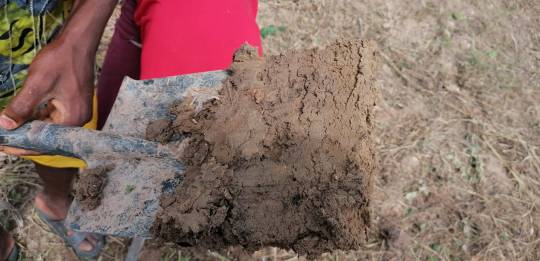
Mittwochs hatten wir ein sehr langes Meeting im Baobab House in Cape Coast mit Edith de Vos(Gründerin), Mr Michael(Farmmanager), Oliver Kunkel(Lehrer aus Deutschland und Begründer von "Future Labs") sowie dessen Frau und der letztjährigen Freiwilligen Sade. Es ging primär um das Projekt Future Labs, dessen Ziele, kulturelle Hürden und um den Zeitplan der nächsten Projekttage mit Oliver und seiner Frau zusammen, die extra dafür aus Deutschland angereist waren. Die folgenden zwei Tage verbrachten wir dann mit Workshops von Oliver und auf der Farm, auch darauf komme ich später noch mal zu sprechen. Am Samstag machten wir schließlich noch eine Exkursion in den Kakum Nationalpark. Der Baumwipfelpfad im Regenwald konnte zwar mit einer herausragenden Aussicht auf die Vegetation punkten, jedoch wurde dieser atemberaubende Anblick vom Geschrei zahlreicher Schulklassen untermalt, die es für eine gute Idee hielten, auf den Hängebrücken herumzuspringen, weshalb es leider unmöglich war, auch nur irgendein Tier außer Schmetterlingen zu sichten.

Schön war es trotzdem und auf dem Abstieg kaufte ich aus Versehen zwei Fläschchen Palmwein, da ich sie für Kokusnuswasser hielt. Ups.
In der dritten Woche hatten wir eingangs direkt ein Meeting mit der Gründerin Edith de Vos und dem Farmmanager Mr Michael, in dem wir über ganz grundsätzliche Strukturen und Regeln in der Einrichtung sowie über die Zukunft des Projektes "Future Labs" an der Schule sprachen. Mir wurde bewusst, wie unglaublich wichtig transparente und regelmäßige Kommunikation für die Zusammenarbeit ist. Außerdem putzten wir unser ganzes Haus.

Die darauffolgenden Tage arbeiteten wir auf der Farm und fuhren danach für das Wochenende nach Cape Coast auf ein traditionelles Festival zu Ehren der ghanaischen Könige. Hier erlebten wir viel: Die ganze Stadt war total in Festivalstimmung. Überall auf den Straßen waren riesige Musikanlagen aufgebaut, die Tag und Nacht so laut Afromusik spielten, dass in unserem Hostelzimmer im Baobab House der Boden vibrierte.
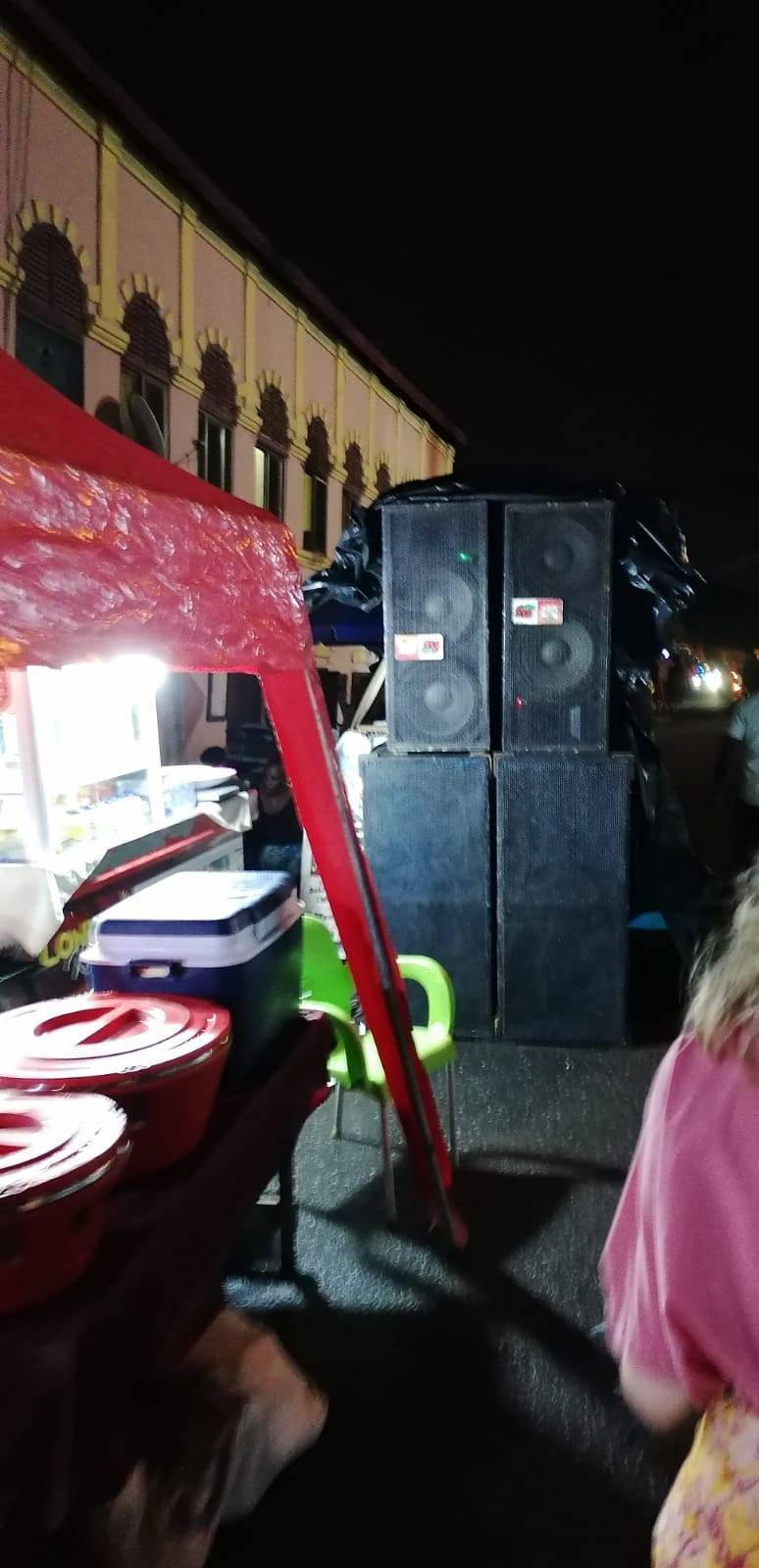
Am Freitag war ein sogenannter "Orange Float" in der Stadt, das ist ein langer Zug von Menschen, die alle Orange tragen und tanzend einem Laster hinterherlaufen, auf dem ganz laute Musik gespielt wird. Samstags gab es einen großen Festzug, bei dem die zwölf Könige durch die Straßen getragen wurden und ganz viel getrommelt wurde. Die ganze Stadt war auf der Straße oder saß auf Hausdächern und Balkonen, um dem Spektakel beizuwohnen.



Sonntags kehren wir dann recht erschöpft wieder nach Kissi ins Center zurück.
Um die bisherige Zeit hier in der Einrichtung zusammenzufassen, kann ich sagen, dass ich es richtig gut fand, dass wir hier in den Ferien gestartet sind und noch einige Wochen mit den letzten Freiwilligen verbringen durften. Ich denke, dass uns dadurch ein "sanfter" Start in unser Jahr hier ermöglicht wurde, da wir durchaus schon mit den Schülern spielen und im Rahmen des FutureLabs auch arbeiten konnten, aber noch keine so durchgetaktete Schulwoche meistern mussten. Außerdem konnten uns die letzten Freiwilligen schon vieles zeigen und erklären. Durch sie haben wir auch einige der Probleme des letzten Jahres mitbekommen und hoffen, diese vermeiden zu können.
Worauf ich auch noch zu Sprechen kommen wollte, war das Future Lab: Das Ganze ist ein Projekt mit Ursprung in Deutschland, das sich für eine "gehirngerechte" Transformation der Schule nach Erkenntnissen der Neurowissenschaft der letzten 15 Jahre einsetzt. Junge Menschen sollen in den Future Labs lernen, miteinander zu kooperieren, selber Projekte zu planen und dann auch umzusetzen. Dabei wird ein Fokus auf das globale Verständnis und eine nachhaltige Landwirtschaft gelegt, da diese offensichtlicherweise essenziell für die Welt von heute und morgen sind. Zusammen mit dem Aspekt des "gehirngerechten" Lernens packt das Projekt somit nicht nur das Problem des Klimawandels durch Bildung an, sondern auch das einer veralteten Schule. In diesem Rahmen ist ein Austausch deutscher Klassen mit Partnerklassen in Afrika vorgesehen, die auch Teil des Future Labs sind.
In diesem Kontext hat der Gründer der Future Labs, Oliver Kunkel, das Center an zwei Tagen besucht und zusammen mit uns einige Workshops durchgeführt, die ich als sehr inspirierend empfunden habe. Wir machten z. B. in der Gruppe einige Experimente zur Kreativität und fanden dabei heraus, dass diese viel besser funktioniert, während man durch den Raum läuft, als wenn man sitzt und auf ein Papier starrt. Wir bekamen auch die Aufgabe, kleine Bilder in 5 min zu zeichnen und sprachen dann darüber wie man Kreativität definieren kann. Wir entdeckten, dass man Kreativität als die Fähigkeit definieren kann, aus einem Input einen Output zu generieren, der keine unmittelbare Assoziation mit der Ausgangsinformation hat. Auch machten wir ein Spiel, bei dem jeder im Kreis eine individuelle Bewegung machte, die dann andere in der richtigen Reihenfolge wiederholen sollten.

Wir analysierten, welche der Bewegungen leicht zu merken waren und welche schwerer. Wir stellten fest, dass das Gehirn Informationen anscheinend viel lieber behält, wenn sie Bezug zur vorherigen Information haben oder zu ihr gegensätzlich sind.
Was ich davon mitgenommen habe, ist auf jeden Fall, dass es so viele Abläufe in unserem Gehirn gibt, die einem das Lernen so sehr erleichtern könnten, die aber in der Schule einfach nicht verwendet werden. Man kann den Kopf sehr vielseitig ansprechen, indem man Informationen mit Bewegungen, Emotionen oder Geschichten verknüpft, man kann für kreative Phasen einen Spaziergang machen und sich dann für die Konzentration wieder an den Schreibtisch setzen.
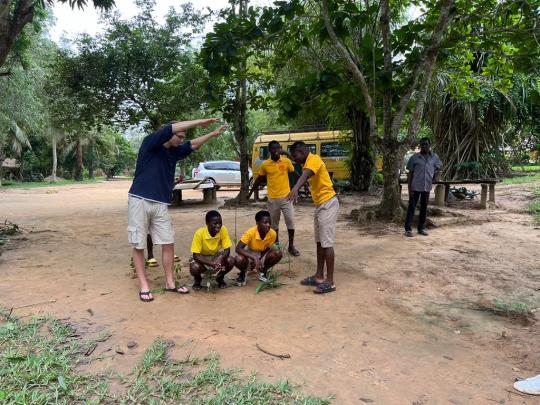
Für mehr Informationen zu den Future Labs könnt ihr diesem Link folgen:
Ich freue mich, diesen Workshops miterlebt zu haben und hoffe, dass ich die Methoden gut in mein eigenes Lernen in der Zukunft und natürlich hier in das Lernen mit den Kindern integrieren kann.
Zum Ende hin möchte ich nun noch einen kurzen Ausblick auf die nächste Zeit hier geben und darauf eingehen, was ich mir erhoffe:
Ich bin unglaublich gespannt, endlich mal den Unterricht hier mit eigenen Augen zu sehen, da ich wissen möchte, inwiefern er sich von deutschem Unterricht unterscheidet. Ich erhoffe mir bald schon die eine oder andere Einheit mit den Kindern machen zu können und am liebsten mit den Methoden des gehirngerechten Lernens aus dem Future Lab etwas in Englisch oder Mathe anzubieten. Was die Werkstätten angeht, so habe ich große Lust, alle einmal auszuprobieren. Ich denke, dass ich im Catering beginnen werde, da ich mir erhoffe, dort vielleicht endlich mal ein bisschen Kochen zu lernen. Ansonsten kann ich mir auch gut vorstellen, mit den Kindern zu joggen oder Handball zu spielen. Was auch auf der Agenda steht, ist ein System zur Mülltrennung mit Müllverbrennungsanlage, die hier in den nächsten Monaten entstehen soll. Hier werden Louisa und ich uns überlegen, wie wir das Konzept der Mülltrennung gut an die Kinder kommunizieren können. Auch will ich mir den Computerunterricht nach den Ferien ansehen und mich längerfristig dort einbringen oder sogar etwas neues initiieren. Nicht zuletzt möchte ich natürlich auch "Fante"(Aussprache: Fanti) - die lokale Sprache - angeignen. Dafür muss ich mir auch noch ein System überlegen.
Alles in allem kann ich mit relativ großer Sicherheit vermuten, dass mir hier nicht langweilig werden wird in den nächsten Monaten, sondern ich viel tun und dabei hoffentlich auch viel lernen werde.
Ich hoffe euch allen in Deutschland - oder wo immer ihr das gerade lest - geht es gut. Ich lasse in nächster Zeit sicher wieder von mir hören, mach es gut bis dahin.
5 notes
·
View notes
Text
Ultimate Luxury Safari and Excellent Migration Experience

Number of days: 12- Complete Tanzania’s Northern Circuit to the best that East Africa has to offer in dramatic landscapes, animal encounters, and unique cultures.
Destinations: Tarangire National Park, Lake Manyara National Park, Serengeti National Park, Ngorongoro Crater Tour, Lake Eyasi and Mto wa mbu Cultural Tourism,
Itinerary
Day 1/2: Fly from USA Arrival in Tanzania and Welcome to Arusha
When you arrive at Kilimanjaro International Airport (JRO), your private guide will welcome you and transport you to the exquisite Arusha Coffee Lodge. This beautiful resort, nestled amid a coffee farm, provides the ideal balance of leisure and African beauty.
Relax with a freshly prepared Tanzanian coffee soft drink after your journey. You have the evening to explore the lodge’s tranquil surroundings before enjoying a sumptuous meal.
Accommodation: Arusha Coffee Lodge Meal: Dinner
Accommodation
LUXURY:
ARUSHA COFFEE LODGE
MID-RANGE:
BUDGET CAMPING:
Day 3: Arusha to Tarangire National Park: Into the Wilderness.
After breakfast, take a picturesque drive to Tarangire National Park, which is famous for its vast elephant populations and ancient baobab trees. Arrive at Tarangire Treetops Lodge in time for lunch.
In the afternoon, head out for a thrilling game drive, spotting lions, leopards, and diverse birdlife. As the sun sets, return to your treetop sanctuary, where you’ll enjoy dinner under a canopy of stars.
Accommodation: Tarangire Treetops
Meals: Breakfast, Lunch, and Dinner
Accommodation
LUXURY:
ELEWANA TARANGIRE TREETOPS
MID-RANGE:
BUDGET CAMPING:
Day 4: Tarangire: Game drives, sundowners, and night safari
Start the day with a morning game drive across the park’s varied landscapes and fauna. After a great lunch inside the park, take some time to unwind before enjoying an incredible sundowner experience while drinking cocktails as the sky becomes golden.
As dusk falls, take an exclusive night game drive to see nocturnal animals such as leopards, bush babies, and aardvarks. Return to your lodging for dinner.
Accommodation: Tarangire Treetops
Meals: Breakfast, Lunch, and Dinner
Accommodation
LUXURY:
MID-RANGE:
BUDGET CAMPING:

Day 5: Tarangire to Lake Manyara/ Ngorongoro
After breakfast, go to Lake Manyara National Park, a lush paradise renowned for its tree-climbing lions, flamingo flocks, and beautiful scenery. After a wildlife drive through deep forests and along the lake’s edge, proceed to the magnificent Ngorongoro Manor, a sumptuous country-style getaway.
Accommodation: Ngorongoro Manor
Meals: Breakfast, Lunch, and Dinner
Accommodation
LUXURY:
MID-RANGE:
BUDGET CAMPING:
Day 6: Full day Ngorongoro Crater Tour- A natural wonder
Descend into the Ngorongoro Crater, one of Africa’s most breathtaking wildlife refuges. This UNESCO World Heritage Site provides exceptional prospects to observe the Big Five — lion, elusive leopard, elephant, buffalo, and the uncommon black rhino.
At lunchtime, Ngorongoro Manor will arrange a sumptuous meal inside the crater, allowing you to dine in the heart of this historic volcanic caldera. After a long day of exploring, retire to your lodge for a restful evening.
Accommodation: Ngorongoro Manor
Meals: Breakfast, Hot Lunch in the Crater, and Dinner
Accommodation
LUXURY:
MID-RANGE:
BUDGET CAMPING:
Day 7: Ngorongoro to Olduvai Gorge & Serengeti National Park
After breakfast, game drive en-route to Olduvai Gorge, one of the world’s most important archaeological sites, where early human fossils have been uncovered. Then, continue on into the famed Serengeti National Park, arriving at the magnificent Serengeti Pioneer Camp in time for a late lunch.
After an afternoon wildlife drive in the Serengeti’s immense plains, return to camp for a traditional bush dinner under the stars.
Accommodation: Serengeti Pioneer Camp
Meals: Breakfast, Lunch, and Dinner
Accommodation
LUXURY:
MID-RANGE:
BUDGET CAMPING:
Day 8: Full-Day Safari in the Northern Serengeti.
Witness the Great Migration. Today, journey deep into the Northern Serengeti, where the Great Migration takes place. Depending on the season, thousands of wildebeests and zebras cross the Mara River, facing fierce currents and lurking crocodiles.
Take a full-day game drive to track predators like cheetahs and lions as they follow the migration. Return to camp for a sunset beverage and a gourmet meal.
Accommodation: Serengeti Pioneer Camp
Meals: Breakfast, Lunch, and Dinner
Accommodation
LUXURY:
MID-RANGE:
BUDGET CAMPING:
Day 9: Another Serengeti Full-Day Safari
The Serengeti is in store for another incredible day! Discover the park’s deep valleys and rocky kopjes, which are lions’ resting places. Choose to have a champagne breakfast after your optional hot air balloon expedition, which will take you over the plains before dawn.
As the day comes to an end, celebrate your incredible safari experience with a farewell meal.
Accommodation: Serengeti Pioneer Camp
Meals: Breakfast, Lunch, and Dinner
Accommodation
LUXURY:
MID-RANGE:
BUDGET CAMPING:
Day 10: Serengeti National Park to Karatu
After breakfast, this is your final day embark on an early morning game drive to to capture those last memorable wildlife encounters and take
in the tranquil beauty of the Serengeti. Afterwards, you’ll head to
Karatu to relax after an unforgettable time in Seregenti. Dinner and overnight.
Accommodation: Ngorongoro Mountan Lodge
Meals: Breakfast, Lunch, and Dinner.
Accommodation
LUXURY:
MID-RANGE:
BUDGET CAMPING:
Day 11/12: Bushmen Activity/ Coffee Farm/ Cultural Tourism/ Fly to USA
After Breakfast, drive to Lake Eyasi. Lake Eyasi is a shallow, endorheic lake located in northern Tanzania,
nestled at the base of the Great Rift Valley. Unlike many other lakes
in the region, Lake Eyasi does not flow into any larger body of water,
making it a unique ecological system. It’s surrounded by a semi-arid
landscape and is a key area for the indigenous Hadza and Datoga
peoples, who rely on its resources for their traditional lifestyles. On your way to the Airport you will visit Coffee Farm and Cultural tourism at Mto wa Mbu. Early dinner in Arusha and evening tranfer to the Kilimanjaro International Airport, fly home.
Take with you unforgettable memories of Tanzania’s breathtaking landscapes, incredible wildlife, and rich cultural experiences.
Accommodation
LUXURY:
MID-RANGE:
BUDGET CAMPING:
WHATS INCLUDED?
All Accommodation as per the itinerary.
Transport and transfers 4 x 4 safari vehicle with pop up roof for game viewing.
Professional English speaking driver guide. ( or other languages as well )
All games drive activities as per the itinerary.
Daily Meals (Breakfast, Lunch and Dinner)
All Park entrance fees.
Bottle drinking water daily.
All Government taxes and V.A.T.
WHATS EXCLUDED?
All flights International and domestic.
Travel insurance.
All items of personal care.
All optional activities.
Tips for driver guides and Hotels.
Alcoholic drinks and non alcoholic drinks.
Book Now: Call:+1 (317) 438–4412 Visit:https://www.kibokosafaris.com/ultimate-luxury-safari-and-excellent-migration-experience
#LuxurySafariExperience#GreatMigrationSafari#WildlifeSafariAdventure#AfricanSafariTours#ExclusiveSafariLodge#BestSafariInAfrica#TanzaniaSafariExperience#KenyaLuxurySafari#SerengetiMigrationTour
0 notes
Text
Why Is Global Warming a Global Concern?
Global warming is a serious global concern because it causes increasing temperatures, extreme weather, and melting ice caps. This leads to rising sea levels, wildfires, and dangers to wildlife. It disturbs health, food, and water supply. Urgent actions are required to reduce carbon emissions and protect our earth for future generations.
Causes of Global Warming
Global warming is caused by human activities and natural factors that increase heat-trapping gases in the atmosphere. Here are the main causes:
Burning Fossil Fuels – Coal, oil, and gas release carbon dioxide (CO₂) when burned for energy.
Deforestation – Cutting down trees reduces the Earth's ability to absorb CO₂.
Industrial Pollution – Factories throw out large amounts of greenhouse gases.
Transportation Emissions – Cars, trucks, and planes burn fossil fuels, releasing CO₂.
Agriculture – Livestock farming builds methane, a powerful greenhouse gas.
Waste Management – Landfills release methane as organic waste decomposes.
Overuse of Electricity – High energy consumption leads to the burning of fossil fuels.
Natural Causes – solar radiation can also contribute to global warming.
Effects of Global Warming
Global warming is causing major changes to our planet, affecting people, wildlife, and ecosystems. Rising temperatures lead to extreme weather, rising sea levels, and environmental damage. If we don’t take action, the effects will worsen, impacting future generations. Here are the key effects of global warming:
🌡️ Rising Temperatures
Global temperatures are increasing, leading to hotter summers and heatwaves.
This causes health issues like heatstroke and dehydration.
🌊 Rising Sea Levels
Melting glaciers and ice caps cause sea levels to increase.
Coastal cities and small islands are at threat of flooding.
Saltwater intrusion impacts freshwater supplies.
🌪️ Extreme Weather Events
More hurricanes, storms, and wildfires happen due to changing climate patterns.
Droughts and heavy rainfall show to crop failures and food shortages.
🐾 Wildlife at Risk
Many animals lose their habitats as forests shrink and ice melts.
Coral reefs are dying due to ocean warming and acidification.
🌾 Impact on Agriculture
Changing rain patterns impact crop growth.
Farmers struggle with lower yields and food costs increase.
💨 Poor Air Quality & Health Issues
Air pollution increases due to wildfires and pollution.
Respiratory diseases like asthma become more common.
🚰 Water Scarcity
Droughts dry up lakes and rivers, reducing drinking water supplies.
Many regions face water shortages, affecting day-to-day life and farming.
How does planting trees reduce global warming
Tree planting is one of the easiest and most effective ways of tackling climate change caused by greenhouse gases.
As trees grow they interest carbon dioxide (CO2), a major greenhouse gas in the atmosphere. When communities plant trees they can help to reduce the effects of climate change in their local area and around the world.
Our work to help residents plant trees is planned carefully so that problems like water availability and the suitability of tree species to the local area are taken into the budget. In almost all cases, indigenous trees will be the first choice for planting, though sometimes hardy, strange species will be introduced.
We also make sure that trees are planted at the height of the rainy season and when there is already moisture in the soil, giving the trees the best chance of survival.
Communities supported by World Vision plant indigenous trees - such as Erythrina and Podocarpus - in highland areas. In countries like Senegal, native Baobab and Bauhinia species are planted and revived with careful pruning.
In some places, it is better to help communities to revive damaged trees or vegetation than to plant new seedlings. In most cases, this is quicker and more affordable because the current trees have already established their root methods.
Solutions global warming
Global warming solutions focus on reducing greenhouse gas emissions and protecting the environment. Human activities like burning fossil fuels, deforestation, and pollution drive climate change, but we can take action to slow it down.
Key Solutions to Global Warming:
🌿 Switch to Renewable Energy – Use solar, wind, and hydropower instead of fossil fuels.
🚗 Reduce Carbon Emissions – Use public transport, electric vehicles, and energy-efficient appliances.
🌳 Protect Forests – Plant trees and prevent deforestation to absorb CO₂.
🏡 Save Energy – Turn off lights, use energy-efficient appliances, and insulate homes.
🍽️ Adopt Sustainable Practices – Reduce waste, recycle, and choose eco-friendly products.
🌍 Support Climate Policies – Encourage governments and businesses to invest in green solutions.
Taking action now can slow climate change and create a cleaner, healthier future. Together, we can fight global warming and protect our planet
Conclusion: Global Warming – A Global Concern
Global warming is a serious global issue that affects our environment, health, and future. Rising temperatures, extreme weather, and melting ice caps threaten life on Earth. To fight this crisis, we must reduce carbon emissions, change to clean energy and adopt sustainable practices. Every action matters. Together, we can fight global warming and protect our earth for future generations.
1 note
·
View note
Text
A Memorable Honeymoon Beach and Safari Adventure in Zanzibar
Do you have romantic getaway visions combining the serenity of pristine beaches with the adventure excitement? Honeymoon safaris and beach vacation in Zanzibar would provide the ultimate romance, wildlife, and leisure marriage. You will have the most relaxing time relaxing on Zanzibar’s wonderful beaches and see the breathtaking sights of Africa by taking unforgettable moments with Mlelwa Afrika Tours and Safaris.
Irrespective of your choice between the adrenaline-pumping wildlife safaris in Tanzania and the quaint island beauty of Zanzibar, our carefully crafted packages ensure that your honeymoon is as amazing as your love story.
Honeymoon Safari Packages in Zanzibar: Where Romance Meets Adventure

Your journey might consist of:
Experience the Great Migration in the Serengeti National Park and marvel at the wide diversity of species including giraffes, elephants, and lions.
A UNESCO World Heritage Site, Ngorongoro Crater offers spectacular wildlife viewing and scenic landscapes.
The secret treasure of safari lovers is Tarangire National Park. It is widely known for having enormous herds of elephants and baobabs.
Make a trip to Zanzibar after your safari adventure to feel the sandy sands, turquoise waters, and elegant resorts.
Vacation Packages for the Beach in Zanzibar: Paradise Awaits
Zanzibar is renowned for its immaculate beaches, lively culture, and historical value. For honeymooners seeking seclusion and peace, our Zanzibar beach holiday packages are an ideal getaway.
Highlights of your beach experience in Zanzibar include:
Nungwi Beach is the best destination for those who love swimming and snorkelling since it has very clean seas with breathtaking sunsets.
Go through Zanzibar’s cultural center, Stone Town, narrow lanes, spice bazaar, and ancient buildings that stand thousands of years.
The coral reefs and the rich diversity of marine life make Mnemba Atoll a diver’s paradise.
Beachfront villas, overwater bungalows, and boutique resorts are available while working with Mlelwa Afrika Tours and Safaris.
Discover the Archipelago with Beach Vacations in the Zanzibar Islands

Popular activities include:
Dhow Cruises: Take a romantic dinner on a classic dhow and sail into the sunset.
Spice Tours: Explore guided aromatic spice farms and understand why Zanzibar is called the “Spice Island.”
Jozani Forest Tour: Understand Zanzibar’s verdant forest reserve, with a sight of the rare red colobus monkey.
There’s something special on every island: from the Pemba islands with their serene beaches to Unguja’s dynamic lifestyle.
Zanzibar Beach and Safari Honeymoon Tour Package
Mlelwa Afrika Tours and Safaris specialises in making honeymoon experiences uniquely yours by telling your personal love story. Our Honeymoon Safari and Beach Vacation packages in Zanzibar can help you tailor every aspect of your safari location and seaside lodging.
We guarantee an amazing honeymoon, be it a spa day for couples with a view of the Indian Ocean, a hot air balloon tour over the Serengeti, or a private candlelit dinner on the beach.
Mlelwa Afrika Tours & Safaris: Why Choose Them?
When it comes to honeymoon planning, which is a very unique experience, you are in good hands with Mlelwa Afrika Tours and Safaris. This is why honeymooners have faith in us:
Customised Itineraries: We customise every aspect of your honeymoon to your tastes so that it is as distinctive as your love tale.
Seamless planning: From the airport pickup to booking the hotel, we take care of everything, so you can just enjoy the time spent together.
Professional Advice: The staff has long years of experience and can thus provide insider information on the top beach and safari destinations.
Unparalleled Service: We go extra miles to make sure your honeymoon is stress-free and full of joy.
Plan Your Honeymoon in Zanzibar Now!
For a honeymoon couple seeking the perfect blend of adventure and relaxation, Honeymoon Safari and Beach Vacation in Zanzibar is definitely a dream come true. Mlelwa Afrika Tours and Safaris will help you plan how you want to enjoy Zanzibar’s tropical allure and Africa’s wild nature.
Take a look at our packages for Honeymoon Safari and Beach Holiday Packages in Zanzibar and let us help you create a lifetime of memories.
Start by visiting Mlelwa Afrika Tours and Safaris to begin planning your romantic getaway.
CONTACT US:
Call us on : :+255753084135
Contact via our email at [email protected]
ADDRESS :- Arusha, Tanzania
0 notes
Text
How to Plan 9 Days of Zanzibar and Tanzania Wildlife Safaris

Travel Company: DAV Safaris
Website: www.davsafaris.com
Email:[email protected]
Tel: +256757795781 or +256701412430
Combining the serene beaches of Zanzibar with the stunning wildlife of Tanzania offers an extraordinary adventure for travelers. This 9-day itinerary not only highlights the best of both destinations but also serves as a guide for arranging any Tanzania wildlife safaris, whether combined with beach vacations or as standalone experiences.
How to Plan 9 Days of Zanzibar and Tanzania Wildlife Safaris
This 9-day Zanzibar and Tanzania wildlife safari itinerary provides a balanced blend of beach relaxation and thrilling wildlife experiences. By following this guide, you’ll gain valuable insights into planning any Tanzania wildlife safaris, ensuring a seamless and unforgettable journey through these incredible destinations
Day 1: Arrival in Zanzibar
Your journey begins upon arrival at Zanzibar International Airport. After clearing customs, you’ll be greeted by your guide and transferred to your beachfront hotel.
Accommodation Options
Select a hotel that suits your preferences. Popular choices include:
Nungwi Dreams by Mantis: Known for its luxurious beachfront settings.
Kendwa Rocks Beach Hotel: Offers a lively atmosphere, ideal for social travelers.
Evening Activities
Spend your first evening unwinding on the beach. Enjoy a delightful dinner at a local restaurant, where you can savor fresh seafood while watching the sun dip below the horizon.
Day 2: Explore Stone Town
After breakfast, embark on a guided tour of Stone Town, a UNESCO World Heritage Site rich in history and culture.
Key Attractions
House of Wonders: Explore this historic building showcasing Zanzibar’s cultural heritage.
Old Fort: Discover the ruins and enjoy panoramic views of the Indian Ocean.
Spice Market: Experience the vibrant spice trade and sample local flavors.
Evening Dining
Dine at The Fisherman’s Restaurant, known for its delicious seafood and vibrant atmosphere, providing a perfect end to your day.
Day 3: Spice Tour and Beach Relaxation
Morning: Spice Tour
Join a spice tour to visit local farms, where you can learn about the spices that have made Zanzibar famous, such as cloves, nutmeg, and cinnamon.
Afternoon: Beach Time
Return to your hotel for some relaxation. Spend the afternoon swimming, sunbathing, or engaging in water sports like snorkeling or diving to explore the vibrant marine life.
Accommodation
Return to your beachfront hotel for another night.
Day 4: Traveling to Tanzania Mainland
After breakfast, take a short flight from Zanzibar to Arusha, Tanzania. Upon arrival, you’ll meet your safari guide and begin your journey to Tarangire National Park.
Journey to Tarangire
The drive to Tarangire takes approximately 2-3 hours. This park is renowned for its large elephant herds and iconic baobab trees.
Evening Game Drive
Check into your lodge and head out for your first game drive. Look for elephants, lions, and a variety of birds as the sun sets over the park.
Accommodation Options
Stay at a lodge such as:
Tarangire Safari Lodge
Maramboi Tented Camp
Day 5: Full Day in Tarangire National Park
Dedicate this day to exploring Tarangire National Park. Start with an early morning game drive to maximize wildlife sightings.
Picnic Lunch
Enjoy a packed lunch in the park, allowing you to take in the stunning natural surroundings.
Afternoon Exploration
Continue your adventures in the afternoon, discovering the diverse ecosystems and unique wildlife that Tarangire has to offer.
Evening Relaxation
Return to your lodge for dinner and share stories of your day with fellow travelers.
Day 6: Ngorongoro Crater
After breakfast, depart for the Ngorongoro Crater, a UNESCO World Heritage Site known for its stunning landscapes and rich wildlife. The drive takes about 2 hours.
Crater Tour
Descend into the crater for a full-day game drive. This area is home to a variety of species, including the Big Five: lions, elephants, buffalo, leopards, and rhinoceroses.
Picnic Lunch in the Crater
Enjoy lunch with spectacular views of the crater floor, surrounded by wildlife.
Evening Return
After a day of exploration, head back to your lodge for dinner and relaxation.
Accommodation
Stay near Ngorongoro at lodges like:
Ngorongoro Serena Safari Lodge
Rhino Lodge
Day 7: Serengeti National Park
After breakfast, travel to Serengeti National Park, one of the most famous wildlife parks in the world. The drive takes approximately 3-4 hours.
Afternoon Game Drive
Upon arrival, check into your lodge and embark on an afternoon game drive. The Serengeti is renowned for its vast savannahs and abundant wildlife.
Evening Safari Experience
Consider a sunset game drive to witness the beauty of the Serengeti as the day transitions into night.
Accommodation Options
Stay overnight at a lodge or tented camp in the Serengeti, such as:
Serengeti Serena Safari Lodge
Kati Kati Tented Camp
Day 8: Full Day in Serengeti National Park
Dedicate this day to exploring the Serengeti. Start with an early morning game drive, when wildlife is most active.
Hot Air Balloon Safari (Optional)
For a unique experience, book a hot air balloon safari. Witness the breathtaking landscapes and wildlife from above, followed by a bush breakfast.
Afternoon Adventure
Continue your exploration with an afternoon game drive, seeking out the diverse wildlife that the Serengeti is famous for.
Evening Relaxation
Return to your lodge for dinner, enjoying the sounds of the African night.
Day 9: Return to Arusha and Departure
After breakfast, enjoy a final morning game drive in the Serengeti, then travel back to Arusha, which takes about 5-6 hours.
Last-Minute Shopping
If time permits, stop at a local market for souvenirs before heading to Kilimanjaro International Airport for your departure flight.
Booking Your Tanzania Wildlife Safari with DAV Safaris
For a hassle-free travel experience, consider booking your Tanzania wildlife safaris with DAV Safaris. With years of expertise in crafting unforgettable safari experiences, DAV Safaris offers tailored packages that cater to your specific needs and preferences. Their knowledgeable guides are passionate about wildlife and conservation, ensuring you have a safe and enriching adventure. Let DAV Safaris help you create the trip of a lifetime, blending the beauty of Zanzibar with the wonder of Tanzania’s wildlife.
#wildlife in zanzibar#tanzania wildlife safaris#discover#trip#expedition#adventure#wildebeest migration
1 note
·
View note
Text
Organic African Foods
Explore the richness of Organic African Foods, where we bring you naturally sourced, and authentic ingredients from across Africa. Our selection includes organic staples like millet, teff, folio, and plantains, along with fresh produce such as cassava, yams, and leafy greens. Enjoy the wholesome goodness of organic palm oil, baobab powder, moringa, and shea butter, all sourced from sustainable farms. Whether you’re preparing traditional dishes like fufu or exploring new recipes, our organic products deliver unmatched flavor and nutrition.

0 notes
Text
The Revival of Botanicals Extracts in the Cosmetics Industry
Emergence of Clean Label Products
Consumers are increasingly looking for natural and organic products that have fewer synthetic ingredients. This has led to a surge in demand for clean label products containing herbal medicines extracts. According to market research, sales of clean beauty products grew by over 25% between 2016 to 2020. Herbal medicines extracts satisfy the consumer need for products with simple, recognizable ingredients sourced from plants. Cosmetic companies are responding to this demand by innovating with herbal medicines formulations. Widespread Applications in Skin and Hair Care
Botanicals Herbal medicines extracts find various uses across skin and hair care categories. In skin care, plant extracts provide anti-aging benefits by reducing fine lines and wrinkles. Popular anti-aging herbal medicines include grapeseed, green tea, and pomegranate extracts which are rich in antioxidants. For moisturization and hydration, hyaluronic acid from Irish moss and squalane from olives and amaranth plants deliver long lasting effects. In hair care, herbal medicines treat various hair and scalp problems. Amla extract strengthens hair follicles while reducing hair fall. Burdock root extract cleanses the scalp and soothes irritation. Neem extract has gained prominence for its ability to kill bacteria and treat dandruff. Beyond their therapeutic properties, herbal medicines also impart aesthetic benefits like softness, sheen and manageability. Addressing Concerns Through Science-Backed Formulation While consumer demand for Botanicals is high, there are also concerns regarding their instability, allergies and interactions. Cosmetic scientists address this through extraction processes and formulation techniques that optimize herbal medicines activity while ensuring safety, efficacy and stability. Supercritical carbon dioxide extraction yields lipid-soluble antioxidant compounds without toxic residues. Nanoemulsification and biopolymer encapsulation help active compounds penetrate deep into the skin and hair cuticles. Stability tests prove formulations last the intended shelf life without changes in color, odor or performance. Clinical studies demonstrate herbal medicines effectively treat specific skin and hair conditions. Regulatory dossiers substantiate claims through scientific proof. These measures assure consumers of herbal medicines’ functional benefits and build brand trust. Regional Sourcing Supports Sustainability Cosmetic marketers highlight regional sourcing of herbal medicines to underscore their sustainability credentials. Tropical herbal medicines like babassu and buriti palms from the Amazon support forest livelihoods. Seaweeds sourced from the pristine coasts of Brittany, France put money back into coastal communities. Neem trees grown on family farms in India empower rural women. Regional sourcing ensures traceability, avoids over-harvesting vulnerable herbal medicines, and supports developing economies. It ties into consumers' interests in ethical and eco-friendly products. Sustainably grown and harvested herbal medicines satisfy needs for natural solutions as well as sustainability. Their regional source serves as a unique selling proposition that elevates brands.
Future Potential Through Novel Ingredients Markets constantly seek novel Botanicals ingredients that address unmet needs. Current research explores new sources like Baobab from Africa valued for vitamin C content. Anti-pollution herbal medicines gewntheol and calendula are gaining interest to fight urban environmental stress. Marine herbal medicines have opened up possibilities from algae strains and microalgae cultures. Extremophile plants surviving harsh conditions offer adaptations worth studying. Technology enabled discovery through genomics, metabolomics and bioprospecting will lead to compounds with applications not imagination. While regulatory substantiation takes time, the future potential for new natural actives remains vast if backed by science. This creates an ongoing opportunity for innovation that keeps the herbal medicines industry vibrant. In conclusion, the rising demand for natural products has spurred a revival of Botanicals extracts in the cosmetics industry. Cosmetic companies are addressing consumer needs through formulations incorporating key regional herbal medicines substantiated by science. Looking ahead, continued research on novel natural ingredients promises to further propel this industry through ongoing innovation. Regional sourcing of herbal medicines also helps brands highlight their sustainability credentials. Overall, herbal medicines satisfy consumer demand for clean, natural products with functional efficacy and constitute a significant pillar for the future growth of the cosmetics industry.
Get more insights on this topic: https://www.newsanalyticspro.com/botanicals-natures-pharmacy/
About Author:
Ravina Pandya, Content Writer, has a strong foothold in the market research industry. She specializes in writing well-researched articles from different industries, including food and beverages, information and technology, healthcare, chemical and materials, etc. (https://www.linkedin.com/in/ravina-pandya-1a3984191)
*Note: 1. Source: Coherent Market Insights, Public sources, Desk research 2. We have leveraged AI tools to mine information and compile it
0 notes
Text
What are some amazing facts about Africa?
MQSinfo.com
Conservationists in South Africa are infusing a special red dye into the horns of live rhinos. The mixture renders the horn completely useless to poachers trying to sell it commercially, and is also toxic for human consumption.
MQSinfo
The ‘loneliest organism’ in the world. A single, lone cycad tree, the dominant tree during the dinosaur era, was discovered in Africa in 1895. They have yet to find a mate to pollinate it.
In 2009 a pigeon named Winston raced Telkom, South Africa’s largest ISP, to see who could deliver 4GB of data to a location 60 miles away the fastest. By the time Winston arrived with the 4GB flash drive, Telkom had transmitted only 4% of the data.
In Rwanda plastic bags are illegal and carry with them a 100-$150 fine. In fact, at airport customs all plastic bags are confiscated which has resulted in Rwanda being one of the most litter free countries in Africa
South Africa is the only country to have ever developed its own nuclear weapons and then voluntarily dismantled them.
There are 4 million square miles of fertile land in Africa that can’t be cultivated because tsetse flies keep killing farm animals
When the world’s largest diamond was transported from Africa to England, an elaborate & secure journey by sea was publicized — as a rouse. The real diamond was simply posted by mail.
MQSinfo
A man in Africa single-handedly stopped the desertification of his region by reviving ancient farming and irrigation techniques despite being ridiculed by his community.
Elephants killed 605 people in Assam b/w 1994–2006. In South Africa, 3 elephants killed 63 rhinos.
Biologists think increased elephant aggression is the result of species-wide trauma from poaching & habitat loss, and direct trauma for those who saw family members murdered before their eyes.
“AIDS orphan tourism” in Africa is a thing, where volunteers temporarily care for children who have lost their parents to the virus, and has left children with attachment disorders and encouraged orphanages to purposefully keep them in poor conditions to attract more volunteers.
The experience of hearing voices among schizophrenia patients is influenced by culture. In the US, patients typically report hearing angry/violent voices. In India and Africa, patients are more likely to report hearing friendly/entertaining voices.
Facts That Are Absolutely Mind Boggling
In 1972 a pocket of uranium in Africa was found to have undergone self-sustaining nuclear fission for over 100,000 years, making it the only known naturally formed nuclear reactor.
There’s a bar in South Africa entirely inside a 6,000 year old baobab tree, a species which naturally begins to hollow after it reaches about 1,000 years old.
“Beehive fences” (spaced along the edge of their property) in Africa help farmers ward off elephants without harming them, while also producing honey that they can sell in addition to other crops.
Facts And Knowledge info
Quotes in urdu
Facts in urdu
Knowledge in urdu
Information in urdu
12 African nations have come together pledging to build a 9 mile wide band of trees that will stretch all the way across Africa, 4750 miles, in order to stop the progressive advancement of the Sahara.
The Prawns in the movie District 9 are not called that because of shrimp, but are in reference to the Parktown prawn which is a cricket native to South Africa.
There is a frog from Africa, Trichobatrachus robustus, that breaks a bone in its toe pad, pushes the sharp broken bone through it’s skin, and tries to shank you with it if it feels threatened.
In Algeria, the largest country in Africa and 35th in world population, women make up 70% of the country’s lawyers and 60% of its judges, as well as dominating the field of medicine. Increasingly, women are contributing more to household income than men. 60% of university students are women.
interesting facts about South Africa — جنوبی افریقہ کے بارے میں دلچسپ حقائق اور معلومات
In 1962 the CIA tipped off South Africa’s intelligence service about the location of Nelson Mandela, leading to his arrest that put him in jail for 27 years
0 notes